If you’re like most consumers today, you care about the sustainability of the products you purchase. An April 2020 survey of 1,000 consumers by global management and consulting firm Kearney found 83% of shoppers consider the environment when they’re shopping. That's an increase from 71% in 2019. Sustainability is important for the future of the planet, for future generations and for the state of the world today.
One way to adopt sustainable practices for you and your family, or your business, is to make it a priority when you’re choosing your outdoor furniture purchases. Yep – even patio furniture can be sustainable. How? When it’s made with recycled HDPE material like used milk jugs or detergent bottles.
HDPE stands for High Density Polyethylene; “poly” for short. Not to be confused with the lower quality and lighter polypropylene, HDPE plastic has a chemical behavior that’s similar to paraffin or wax. HDPE’s malleable qualities when heated and melted, make it a perfect fit to transform into poly lumber used in crafting durable, outdoor furniture.
Recycled HDPE plastic furniture can mimic the look and feel of real wood. That’s why it’s sometimes called poly wood. But since recycled HDPE comes from recyclable plastic material, it doesn’t have the environmental impact required of chopping down and sourcing trees to create wood furniture.
Quite the opposite: recycled HDPE plastic furniture keeps more non-biodegradable waste out of landfills and the ocean. Humans produce more than 300 million tons of plastic each year, according to Plastic Oceans. The journal “Science” estimates between 4.8 million and 12.7 million tons of plastic waste enters the ocean every year. One way to reduce your carbon footprint and show your family or customers you care about sustainability is to invest in recycled furniture. Plus, Breezesta's options are incredibly stylish and customizable.
Is poly wood environmentally friendly? We’re glad you asked. Learn next how recycled HDPE material is made, how it impacts the environment and consumers, and what to look for when shopping for recycled HDPE plastic outdoor furniture.
What Exactly is HDPE Furniture?
Polyethylene is a type of “commodity plastic,” which means it’s used in high volume for a wide range of applications. HDPE plastic is made from petroleum and forms the category of recyclable plastic no. 2. You might see a “2” recycling symbol on products made from it to distinguish the material and indicate it’s recyclable.
HDPE plastic is a linear hydrocarbon polymer, which is a strong, non-toxic plastic that’s commonly used in products like:
- Automotive and boat parts
- Bread trays
- Cereal box liners
- Construction products
- Corrosion-resistant piping
- Cosmetics packaging
- Cutting boards
- Deli food packaging
- Drinking water distribution systems
- Food storage containers
- Grocery and retail bags
- Household cleaners
- Liquid laundry detergent and bleach bottles
- Margarine tubs
- Milk jugs
- Non-carbonated beverage bottles
- Pharmaceutical containers
- Portable gasoline cans
- Shampoo bottles
- Snack food packages
- Water drainage pipes
- Whipped topping packaging
HDPE plastic is engineered to be low-maintenance, long-lasting and safe. It also has a high melting point, which enables HDPE plastic products to remain rigid under very high temperatures. It’s also resistant to low temperatures, so it won’t become brittle in cold environments.
HDPE plastic materials are also waterproof. They resist moisture, mildew, fungus, bacteria, mold and rotting. Since HDPE plastic is non-porous, it’s very easy to clean and creates a strong barrier from external elements.
HDPE plastic can also withstand strong mineral acids. It doesn’t easily get damaged by common chemicals, water, cleaning fluids or detergents.
It also has a large strength-to-density ratio and is impact-resistant, all of which makes HDPE plastic highly durable and a perfect material for any outdoor furniture. With minimal care and maintenance, it has the potential to keep looking great year after year!
HDPE plastic is extremely safe, which is why it’s often used as a container for food for human consumption and beauty products that are applied topically. It contains no formaldehyde, is non-carcinogenic and doesn’t off-gas chemicals. It’s one of the most commonly used plastic varieties around the world.
HDPE plastic furniture has color that is evenly mixed throughout the poly lumber construction. Therefore, it doesn’t require touch-ups or repainting if dented or chipped. This fact also decreases the amount of organic compound emissions in the world that come from paint. While some of the above-mentioned products, like plastic grocery bags, aren’t in as high use these days, HDPE plastic continues to be prevalent among everyday products and systems. When items like margarine containers or milk jugs are disposed, they can infiltrate oceans and fill up landfills. Or, the much better option: they can be recycled into high-quality, beautiful outdoor furniture.
How is HDPE Furniture Produced?
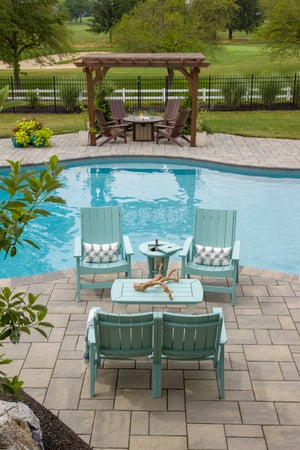
To produce HDPE plastic material, the following steps are taken:
- Intense heat is applied to petroleum.
- During this “cracking” process, ethylene gas is released.
- The gas molecules attach to form polymers, which are large molecules created through bonding, or by chemically linking.
- The polymers produce polyethylene, which is a plastic material.
- The polyethylene is inserted through a series of molds.
- The polyethylene then forms into granules, which is used to create HDPE plastic products, such as consumer containers.
Breezesta uses recycled HDPE to create our weather-resistant, durable furniture. First, our recycling plant, Trigon plastics, buys bails of post-consumer plastic collected by waste removal companies. The recycling plant is only about 20 miles away from our manufacturing plant, minimizing our carbon footprint and keeping all Breezesta furniture made in the USA from start to finish.
We separate the plastic by color and type, selecting only #2 in natural color for our furniture material. We sell off the plastic we don’t use to be repurposed and recycled elsewhere. Then, thoroughly wash, shred, grind, and pelletize it in order for it to melt very smoothly into twelve foot extrusion molds.
The pelletized recycled HDPE is mixed with colorant and a proprietary blend of Sun-Guard Technology UV inhibitors and stabilizers to resist fading. We then melt the mixture at very high heat and apply a foaming agent to create the realistic wood texture. The end result at Trigon is strong poly lumber boards to be used for furniture creations. The colorful recycled HDPE boards are finally transported to our Lancaster County plant where they are crafted into eco-friendly, sturdy, comfortable furniture that requires little maintenance and lasts a lifetime. It’s quite remarkable that each piece of furniture used to be milk jugs or detergent bottles. Your old milk jug may have even made its way into one of our chairs!
From start to finish, the process is pure and efficient – just like the finished furniture product. Using this recycled plastic process, we can create hundreds of SKUs of recycled HDPE plastic furniture pieces. These include bestsellers like:
- Adirondacks
- Bar Chairs
- Swivel Dining Chairs Glider
- Skyline High Back Rocker
- Chaise Lounges
- Sofas
We’re also using the process for our brand-new cushionless-deep seating Chill Collection, debuting in 2021.
How much plastic do we recycle to make elegant, durable furniture that decorates homes or businesses like yours? To get an idea, we use 590 milk jugs to make a single Breezesta recycled HDPE plastic high-top Coastal Counter Chair. As of December 2020, we’ve already salvaged nearly 350 million milk jugs from landfills and waterways!
When you use recycled HDPE plastic outdoor furniture, it’s a win-win. You get to adorn your outdoor space with beautiful, comfortable furniture while helping reduce waste and improve sustainability for the planet.
Is Recycled HDPE Furniture Recyclable?
You’ve made an environmentally-conscious choice in buying recycled furniture and might be wondering if the finished products can be repurposed and recycled once again down the road. Contact your trash company or local recycling agency to get information on how to recycle this type of furniture. Most likely, you won’t be able to place old furniture into a recycling bin. Instead, there may be curb-side pick-up or drop-off options. Some recycling agencies may not deal with residential end users at all.
Since non-plastic furniture is more likely to be damaged, it ends up being trashed earlier and more frequently than high-quality recycled HDPE plastic furniture from Breezesta. All our furniture comes with a limited lifetime guarantee. It will last season after season. But, if you no longer wish to own it, we recommend bestowing it to friends, family or non-profits.
Can All Plastic Patio Furniture Be Recycled?
No, not all plastic furniture can be recycled. That's because not all plastics can be reused. These include:
- Polystyrene, or PS: This is used to make products like foam cups for hot beverages, yogurt containers and plastic utensils.
- Low-density polyethylene, or LDPE: This alternative version to polyethylene is used in materials like garbage bins and plastic garbage bags.
- Polypropylene, or PP: This plastic is used for things like takeout containers, ice cream containers and disposable lunchboxes.
Breezesta is committed to sustainability, which is why we source only recyclable HDPE plastic for our outdoor furniture.
Why Does Plastic Recycling Matter?
Curious about the benefits of recycling plastic? According to Stanford University, 1 ton of recycled plastic saves:
- 5,774 Kwh of energy
- 16.3 barrels of oil
- 98 million BTU’s of energy
- 30 cubic yards of landfill space
Consider additional recycling benefits like these:
- Less waste equals less pressure on landfills, resources and the environment.
- More recycling decreases the amount of garbage in landfills and in incineration plants, which decreases air and water pollution.
- Recycling saves production and energy costs.
- Using recycled products reduces the negative impacts that virgin material extraction and processing have on the environment.
- Recycling conserves resources and energy, which benefits the economy.
- Recycling reduces greenhouse gases.
- Recycling improves water and air quality.
- Recycling preserves forested land and open space.
In addition to considering the recyclability of plastic material that you use daily, it also helps to consider whether your plastic furniture comes from recycled sources.
The difference between virgin materials and recycled materials matters. Virgin plastic is the HDPE plastic created in the initial petroleum melting process. It has never been used or processed before. Creating it requires environmental resources. Some plastic furniture companies use virgin HDPE plastic. These products are not considered sustainable or eco-friendly.
The recycled plastic we use at Breezesta is a proprietary blend of recycled HDPE, including both post-consumer and post-industrial HDPE plastic. Post-consumer material is reclaimed after the consumer has recycled it, like milk jugs and laundry detergent bottles. Post-industrial material in our case refers to waste that’s generated from the furniture manufacturing process that can be used again in the lumber extrusion process.
Not all plastic furniture is made from recycled materials. In fact, most of it is not. Beware if it is important for you to positively impact the environment by reducing plastic waste. Purchasing Breezesta outdoor furniture is a choice you can feel really good about. We’re focused on sustainability from sourcing to creation, so you get a sustainable product that you can enjoy season after season, year after year.
The bottom line is you do have a choice. Buying beautiful furniture from recycled plastic materials is doing your part in the global effort against single-use plastics.
Is All Recycled HDPE Created Equal?
No, not all recycled HDPE is made the same. The quality of the HDPE plastic material will depend on the recipe or process. Variations in HDPE plastic creation can result in vastly different furniture qualities and textures.
At Breezesta, our proprietary formula and process results in very dense and durable recycled HDPE plastic poly lumber that’s heavier than most competitors’ HDPE plastic versions. This results in wood-like material made from recycled items that would otherwise end up in a landfill or ocean. Unlike plastic furniture made from low-quality polystyrene, Breezesta’s premium recycled HDPE furniture is built to last season after season.
You should also consider weight when comparing HDPE plastic furniture. Heavier equals higher quality and more strength. More material in a piece of furniture also means more plastic was saved and recycled. Breezesta is the heaviest recycled HDPE plastic furniture you’ll find on the market.
As a final consideration, craftsmanship is important to quality and aesthetics. Breezesta furniture uses Sure-Lok joint mortise-and-tenon construction, which is a technique typically used in fine woodworking. Tight joints and less hardware assure the furniture’s sturdiness, durability, and refined design.
Other plastic furniture might easily crack, warp or even break. Not ours. Like a tromp l’oeil optical illusion in a painting, your guests will most likely be fooled into thinking your furniture is real wood. No one can even imagine it’s made from recycled plastic consumer containers.
HDPE plastic furniture will integrate a small degree or high degree of metal hardware as fasteners. It is important to use very high quality hardware to avoid rust, especially in coastal climates. Keep in mind, even stainless steel is not entirely rust proof, just rust resistant. At Breezesta, rest assured we design for high aesthetics and less visible hardware. We use very strong and rust resistant hardware. In fact, we are the only manufacturer to offer a 2-year hardware rust warranty and will gladly provide new hardware upon request over the course of the limited lifetime warranty.
If you’re serious about the sustainability of your furniture or any intended purchase, it’s also important to consider the sourcing or origin of the raw materials. Poly that’s sourced close to the furniture factory (like ours – just 20 miles away!) reduces your furniture’s overall carbon footprint.
Breezesta HDPE plastic furniture is completely manufactured here in the U.S. Since we’re vertically integrated with nearby Trigon Plastics Recycling Plant, that means we have a smaller carbon footprint compared to furniture producers that work with far-away plastics suppliers.
Other Benefits of Breezesta HDPE Plastic Furniture
In addition to the environmentally friendly benefits, Breezesta recycled HDPE plastic furniture is more durable and offers a better lifecycle value compared to other types of furniture.
For example, teak wood is expensive and, like other types of wood, will fade and need lots of maintenance. Whereas HDPE plastic furniture has the look and feel of authentic wood with its unique wood grain texture but none of the common wood problems like rotting, cracking, splintering, chipping and peeling.
Our recycled HDPE plastic furniture is crafted with a lifetime guarantee. It weathers all seasons and conditions and the colors are fade resistant. Sun, wind, rain, salt spray, whatever – Breezesta recycled HDPE plastic furniture withstands the elements. An occasional hosing down or washing with soap and water is all that is typically needed to keep the furniture looking like the day you bought it.
In terms of comfort, most types of outdoor furniture require cushions, be it aluminum, real or resin wicker. Even other poly brands that are touted as cushionless, have flat seats or backs that do not conform to our bodies. Breezesta's premium recycled poly furniture doesn’t require cushions. It's crafted with contours for ultimate comfort and plenty of cushion-less options.
HDPE plastic furniture is easier to store, too. Cushions require cleaning and storage when they’re not in use so they don’t stain or grow mildew. With HDPE recycled plastic cushion-less furniture, you don’t have to worry about the time and hassle of storage and extra cleaning. Just sit, relax and enjoy your eco-friendly furniture.
The Breezesta Furniture Difference
Breezesta makes recycled plastic furniture that takes sustainability into account every step in the way. We even use sustainable materials in our eco-friendly marketing materials!
We’re constantly innovating to craft the most comfortable, appealing outdoor furniture available. With every seat, you can relax knowing your purchase was environmentally friendly. You can also enjoy the affordable luxury our ergonomically designed pieces offer.
Breezesta only uses:
- The highest-quality recyclable materials
- The most sustainable manufacturing processes
- The most effective materials and designs to create furniture for a lifetime
Whatever your outdoor furniture needs, we have the chairs, tables, dining sets, benches, swings, lounge furniture and everything in-between you need to deck out your space. Your furniture can be customized in 20 color options to perfectly coordinate with your unique environment. We provide a limited lifetime warranty and guarantee the quality of all of our products.
Now that you know that poly wood material is environmentally friendly, how will you outfit your outdoor space? Browse our premium recycled poly furniture collection to see what’s new, what catches your eye, and how it contributes to the planet’s sustainability. Then, find a Breezesta furniture retailer near you:




%20PB-1601-Armless%20Sectional%20(5)%20PB-1600.jpg)
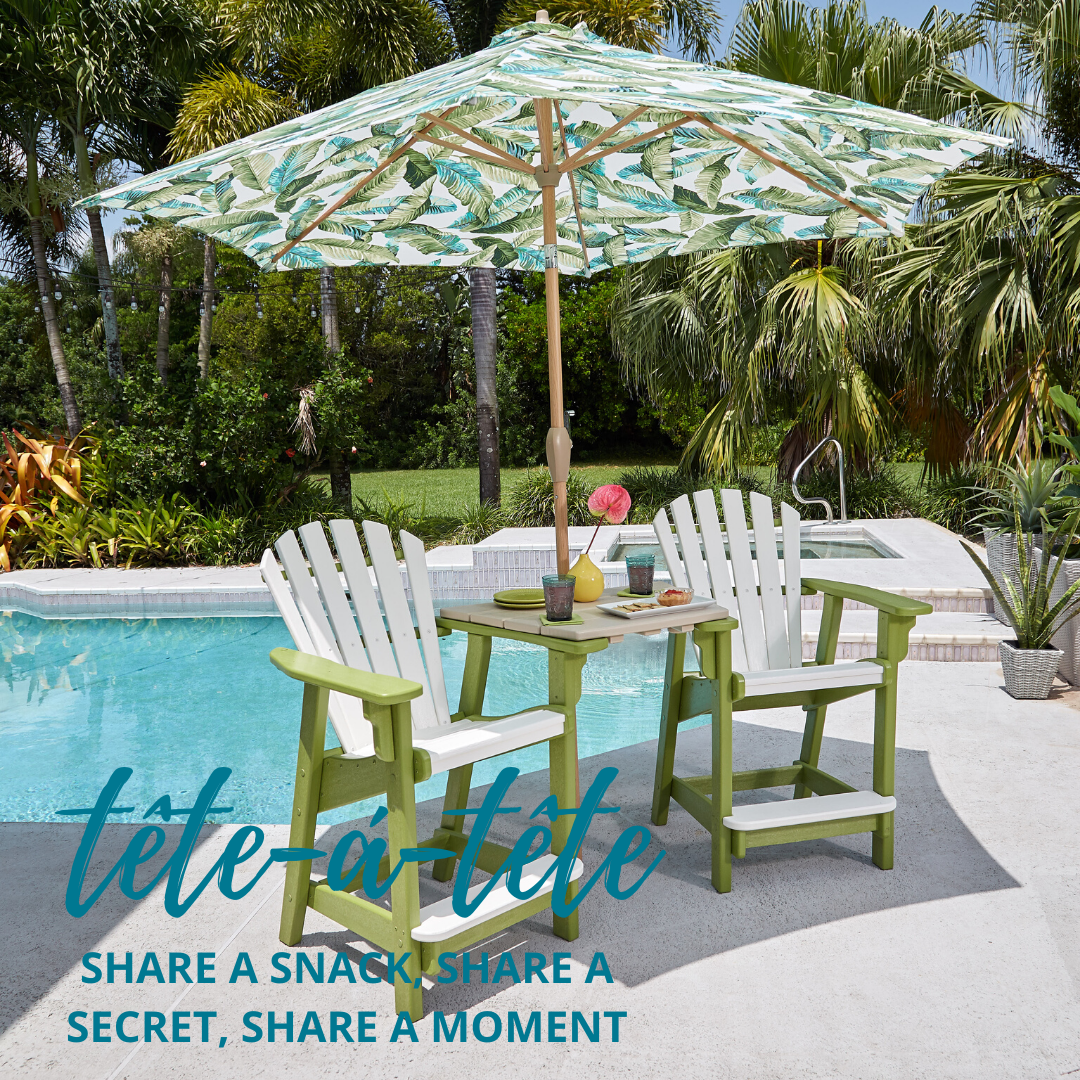
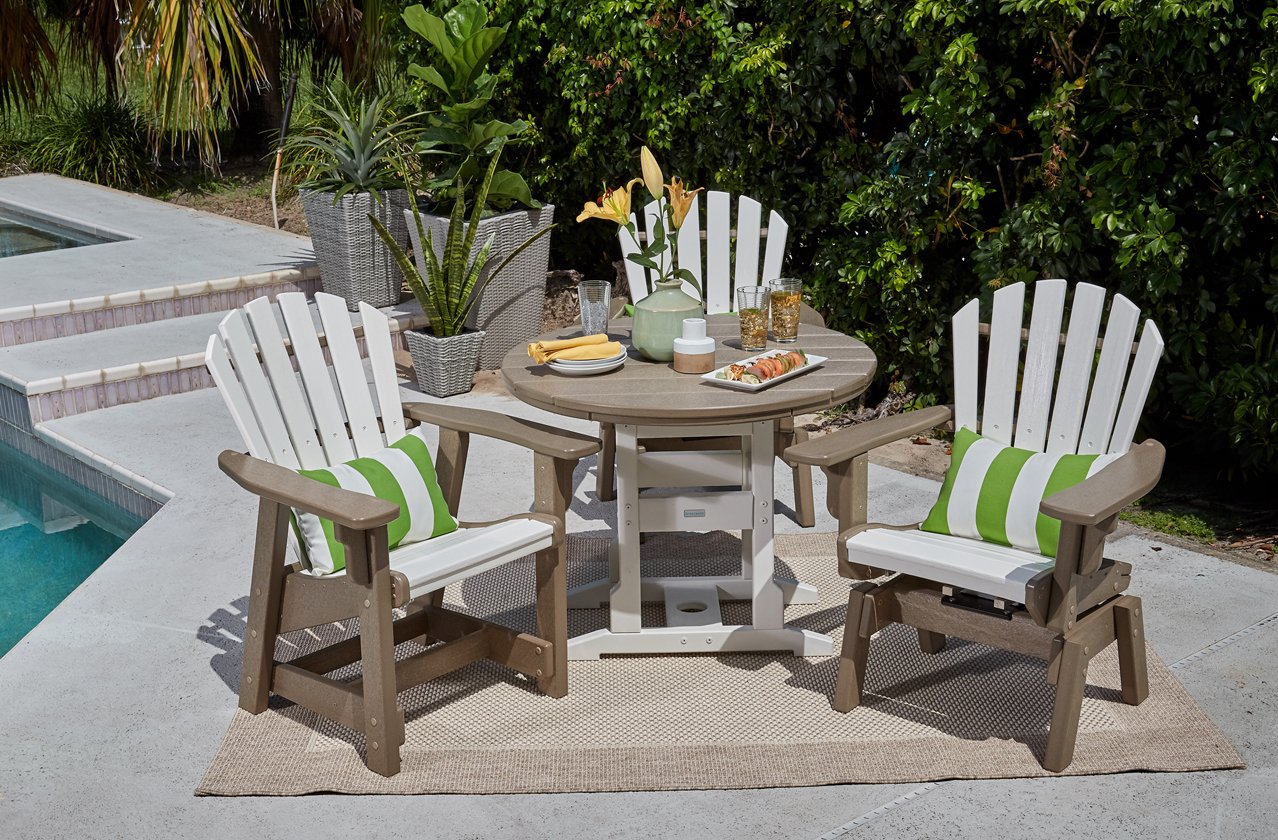
.png)
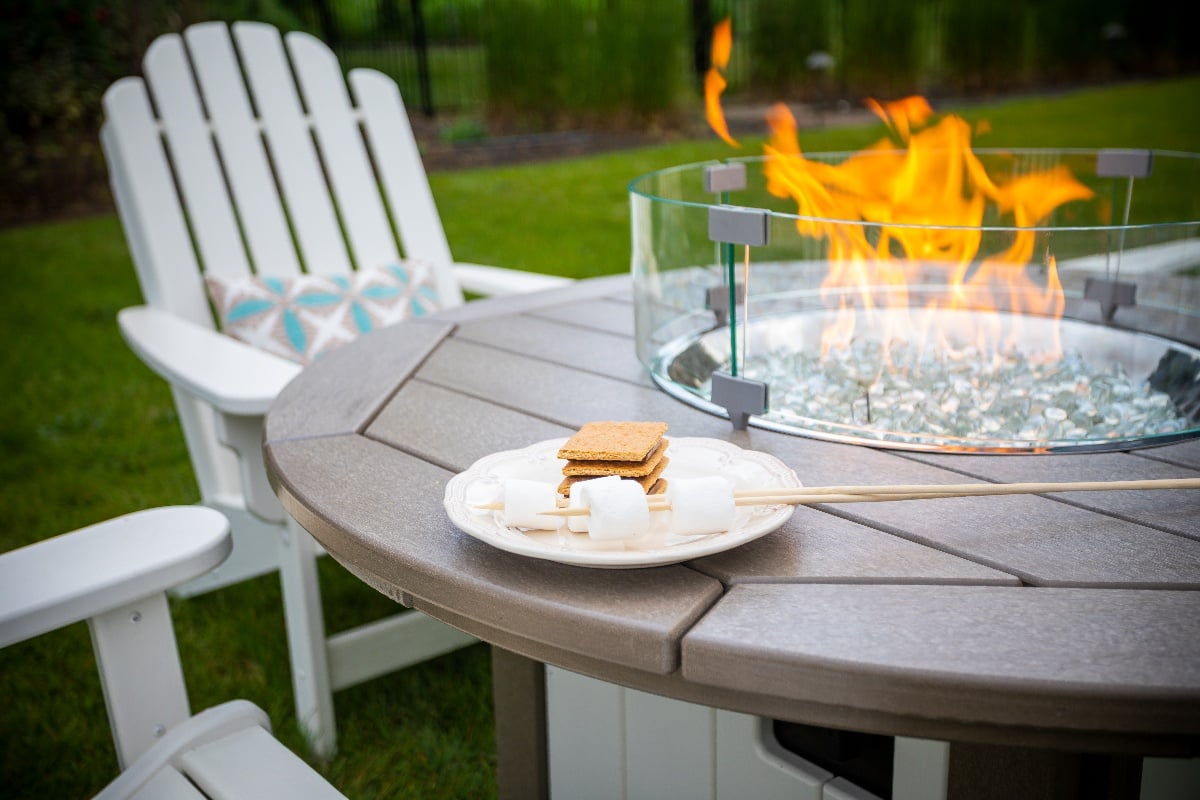
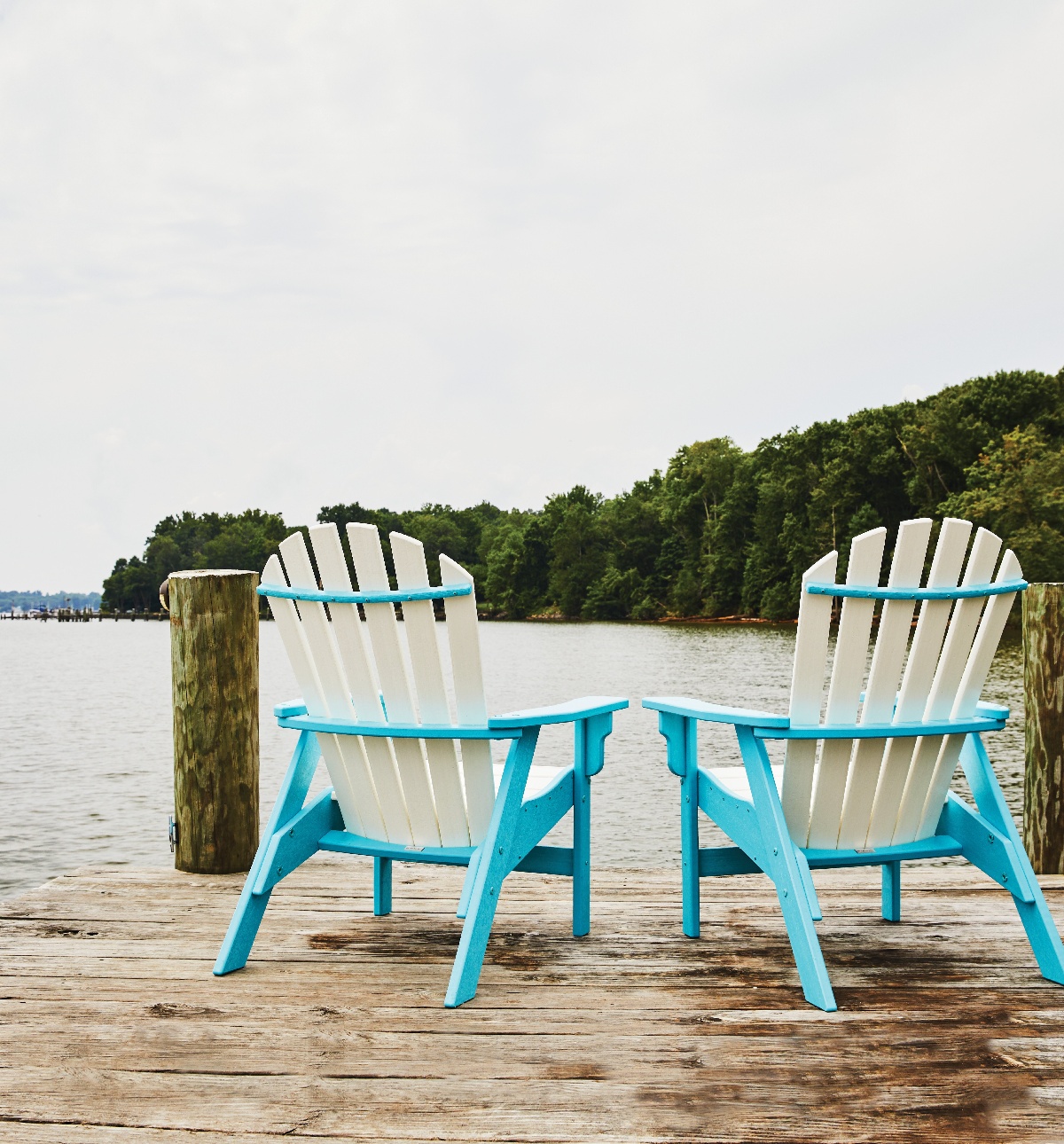
.jpg)
